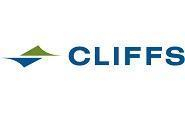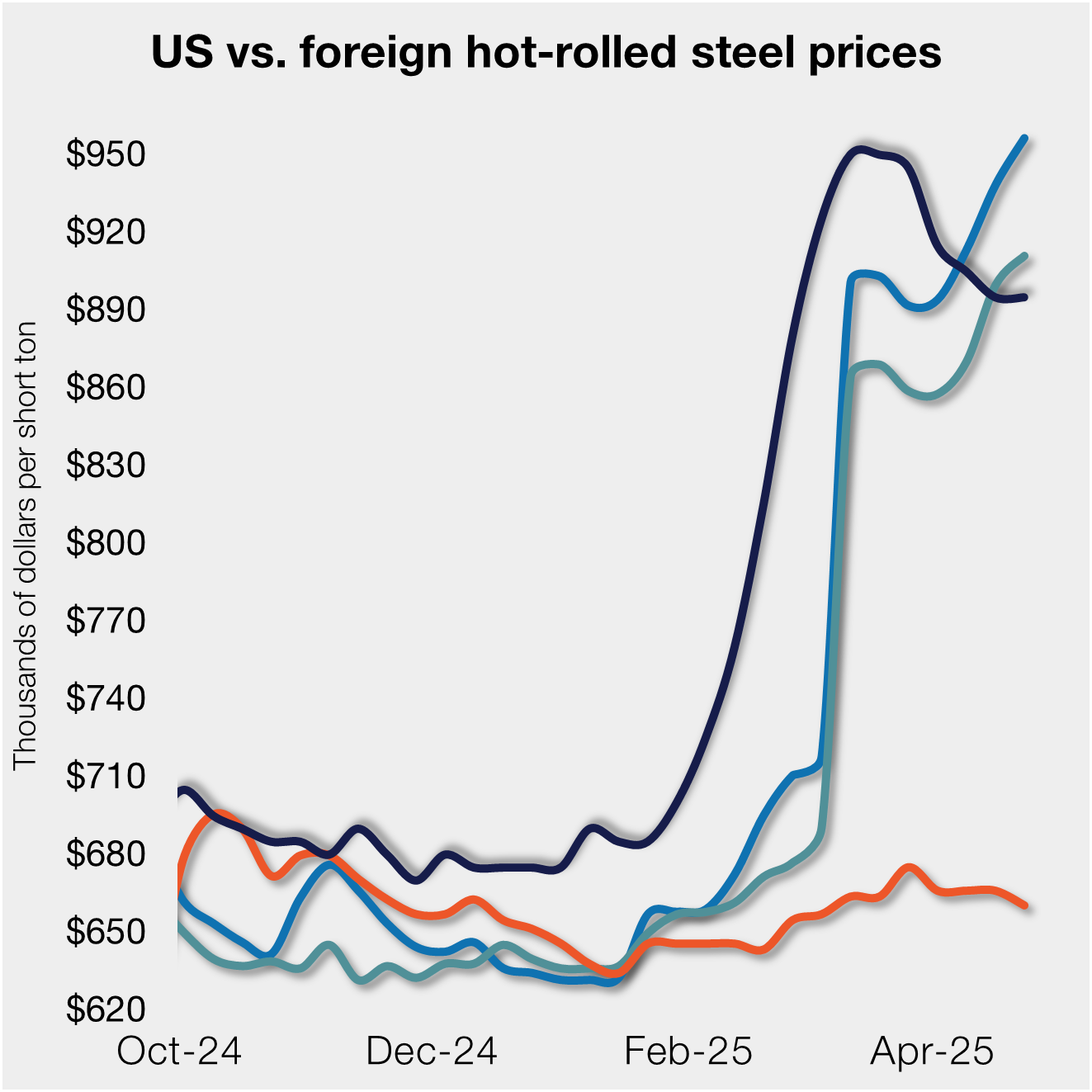Steel Products

Goncalves: 2020 was a "Transformational Year" for Cleveland-Cliffs
Written by Sandy Williams
February 25, 2021
“Life at Cleveland-Cliffs has been intense,” said CEO Lourenco Goncalves, referring to a pandemic-challenged year in 2020 and major changes to what just one year ago was an iron ore company.
“Without question, 2020 was the most transformational year in our company’s 173-year history,” said Goncalves. “We completed two seminal acquisitions, AK Steel and ArcelorMittal USA, that transformed us from an iron ore miner into the largest flat-rolled steelmaker in North America. We also completed our Toledo direct reduction plant, which began operations in the fourth quarter. We were able to accomplish all of this while navigating through the COVID-19 pandemic and taking action to preserve the health and safety of our workforce and our company for the long-term.”
During the fourth quarter of 2020, Cleveland-Cliffs’ revenues totaled $2.3 billion for net income of $74 million. Full-year results showed revenue at $5.4 billion, up from $2 billion in 2019, with a net loss of $81 million compared to net income a year ago of $293 million. Both quarterly and yearly results were impacted by acquisition-related and amortization of inventory step-up costs.
The acquisition of ArcelorMittal USA in December brings the number of blast furnaces at the company’s operations to 10. Six to eight of the BFs will be in simultaneous production, with the flexibility of restarting others during maintenance projects or to adjust production to demand, the company said. The Middletown furnace will be taken down in the first quarter for 45 days of furnace maintenance (not a full-reline) and, in preparation, the #6 furnace was restarted to make up for lost production at Middletown. Once Middletown restarts, the #7 furnace at Indiana Harbor will take an outage.
{loadposition reserved_message}
In the fourth quarter, 1.5 million tons of steel were shipped from AK Steel and 600,000 tons from ArcelorMittal USA. Cleveland-Cliffs expects to double the amount to 4 million net tons in the first quarter of 2021. Shipments during the quarter were 44% coated, 22% hot rolled, 18% cold rolled and 16% other steel, which includes stainless, electrical, slabs, plate and rail. Lead times are three months for hot rolled and four months for cold-rolled and coated products. Recent higher pricing will be reflected in the first quarter due to contract lags, the company said.
Goncalves stressed that Cleveland-Cliffs will be operated responsibly to avoid flooding the market with steel. The company doesn’t prioritize the production of tons, but rather value over volume, delivering on time and accommodating client demand, particularly automotive clients, he said.
“With our very relevant position as a player in the newly consolidated U.S. domestic market, we are taking a disciplined approach to supply,” said Goncalves. “We will continue to manage our customer needs and will not restart capacity on a whim just to add tonnage to the spot market. That would not be good for anyone, including Cliffs’ business and our workforce.”
The completion of the Toledo Direct Reduction plant is a critical element of Cleveland-Cliffs’ strategy. Not only does it provide high quality and environmentally friendly feedstock for the company’s furnaces, but it also provides an alternative to expensive prime scrap use by electric arc furnaces. With an already tight supply of scrap, that will get tighter as more EAFs come online in the U.S., HBI is an attractive alternative, the company said.
Full ramp-up of the plant is expected by the second quarter. Currently, all of Cleveland-Cliffs’ HBI is used in-house, but Toledo will begin shipping to third-party customers at the end of March, starting with Nucor and followed by Steel Dynamics and North Star BlueScope. The company eventually plans to sell half of its HBI, while using half for internal steel production.
Goncalves noted that China plans to double its EAF capacity from 100 million metric tonnes to 200 million tonnes over the next five years. By 2025, China is expected to produce two-and-a-half to three times more steel via EAF than the U.S. Lacking the infrastructure to collect and deliver scrap domestically, China will be importing scrap, which, in large part, will come from the United States. “This is something Cleveland-Cliffs predicted several years ago and one of the reasons why we built the DR plant,” said Goncalves. EAF furnaces will all be fighting over the same amount of available scrap, he added. “We feel very comfortable with the powerful position we have built.”
The addition of AK Steel brought 70% of the automotive market to Cleveland-Cliffs. The addition of ArcelorMittal USA added a wider variety of end markets, changing the market share to 40% automotive and 60% other markets. The company has started moving slabs between AK Steel and AMUSA facilities to reduce logistics costs and improve delivery to customers. Cleveland-Cliffs also has a “meaningful business selling slabs to AM/NS Calvert that will generate good revenue.”
Cleveland-Cliffs has targeted a 25% reduction in greenhouse gas emissions by 2030. The plan includes using more natural gas to reduce iron ore, implementing clean energy and carbon capture technologies and improving transparency on products. The use of hydrogen is another method being explored to reduce emissions. Once hydrogen becomes commercially available, the Toledo plant can replace 30% of natural gas used in iron reduction with hydrogen with no equipment modifications. With minor modifications, a 70% replacement can be achieved, further reducing greenhouse gas emissions.
“We are going to continue to introduce HBI in our blast furnaces and that will continue to reduce our consumption of coal and coke,” said Goncalves. “All these things have an environmental impact, and actually, they are positive for cost. I tend to agree when I hear President Biden talking that environmental compliance can be done and can be done generating good paying union jobs.”
Looking forward, Goncalves commented, “We can confidently say that the second quarter will look even better than the first quarter, this very good first quarter that we are in now, as rising prices become further reflected, HBI shipments pick up pace and external pellet sales pick up with the reopening of the Great Lakes.”
By Sandy Williams, Sandy@SteelMarketUpdate.com

Sandy Williams
Read more from Sandy WilliamsLatest in Steel Products

S232 lifts EU HR price over US, Asian HR still well behind
Domestic hot-rolled coil prices were flat this week after dropping for four straight weeks. Most offshore markets bucked the trend and gained ground.

SMU Steel Demand Index dips into contraction
SMU’s Steel Demand Index has moved into contraction, according to late April indicators. The slowdown comes in response to growing tariff uncertainty after the index reached a four-year high in late February.

Nucor selects Fives Group for new galv line at CSI
Nucor Corp. has tapped Fives Group as its partner in designing and manufacturing the new continuous galvanizing line being added at its California Steel Industries (CSI) joint venture in Fontana, Calif.

AISI: Raw steel production levels off near six-month high
The volume of raw steel produced by US mills remained relatively flat last week, maintaining the rebound seen one week prior, according to the American Iron and Steel Institute (AISI). Previously at the second-highest rate of the year, production continues to hold at one the strongest levels recorded over the last six months.

Nucor keeps HRC price unchanged
Nucor has kept its weekly hot-rolled (HR) coil price flat this week, after a marginal cut the previous week.
